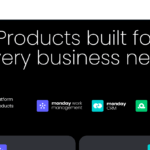
In today’s fast-paced business world, finding the right collaboration tools is crucial for team success.
As we step into 2025, the landscape of collaboration software has evolved dramatically, offering teams more options than ever before.
In this comprehensive guide, we’ll explore the best collaboration tools available this year, helping you make informed decisions to enhance your team’s productivity and efficiency.
Why Collaboration Tools Matter
Effective teamwork is the backbone of successful organizations. Collaboration tools help bridge gaps between team members, streamline communication, and ensure everyone is on the same page.
According to a study by McKinsey, companies that invest in collaboration tools see a 20-30% improvement in productivity. These tools are especially important in today’s hybrid work environment, where teams often operate across different locations and time zones.
Key Features to Look for in Collaboration Tools
Before diving into specific software options, let’s discuss essential features to consider when selecting collaboration tools for your team:
- Real-time communication: Instant messaging, video conferencing, and screen sharing capabilities
- Project management: Task assignment, progress tracking, and deadline management
- File sharing: Secure storage and easy access to documents and resources
- Customization: Ability to tailor the tool to your team’s specific needs
- Integration: Compatibility with other software your team uses
- User-friendly interface: Easy to navigate and learn
Top Collaboration Tools for Teams in 2025
1. Microsoft Teams
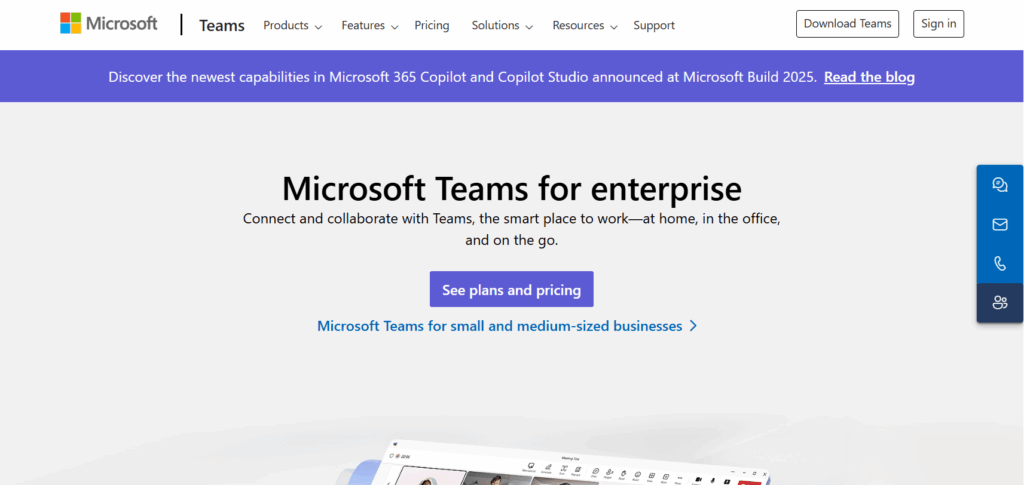
Overview: Microsoft Teams is a robust collaboration platform that integrates seamlessly with other Microsoft products like Word, Excel, and PowerPoint. It offers real-time communication through chat, video calls, and voice messages.
Key Features:
- Integrated Office 365 apps
- File sharing and co-authoring
- Project management tools
- Security and compliance features
Pricing: Microsoft Teams is free for personal use, but businesses will need a Microsoft 365 subscription starting at $5 per user per month.
Ideal For: Teams already using Microsoft products or those needing advanced security features.
2. Slack
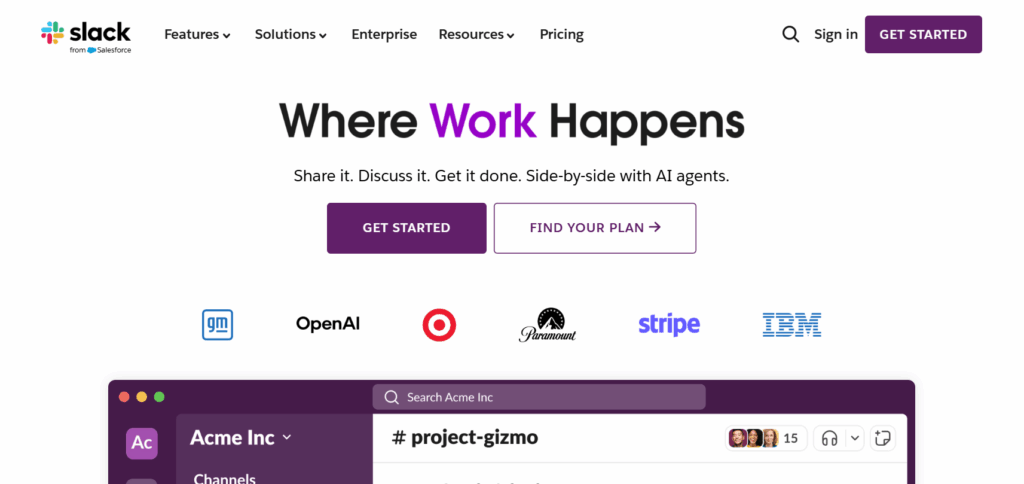
Overview: Slack is a popular communication platform known for its simplicity and ease of use. It allows teams to organize conversations into channels and integrates with numerous third-party apps.
Key Features:
- Organized channels for different topics or projects
- Integrations with tools like Google Drive, Trello, and Zoom
- Customizable notifications and alerts
- Searchable message history
Pricing: Slack offers a free version with basic features, while premium plans start at $6.67 per user per month.
Ideal For: Teams seeking a user-friendly communication tool with extensive integration capabilities.
3. Asana

Overview: Asana is a powerful project management tool that helps teams organize, track, and manage their work. It provides a visual overview of projects and allows for efficient task assignment.
Key Features:
- Task and project tracking
- Gantt charts for timeline visualization
- Team calendars and schedules
- Custom fields and templates
Pricing: Asana offers a free version for basic use, with premium plans starting at $10.99 per user per month.
Ideal For: Teams focused on project management and task organization.
4. Trello
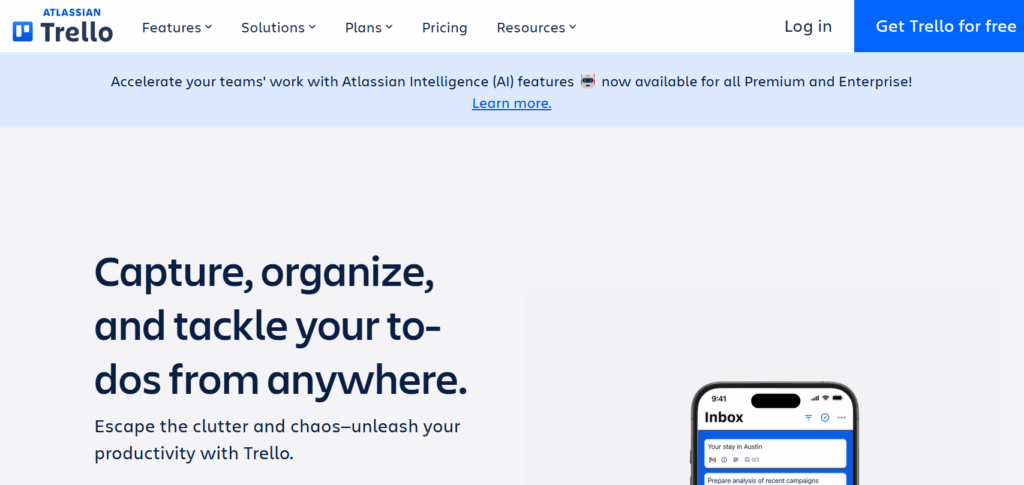
Overview: Trello uses a board, list, and card format to help teams visualize and manage their work. Its simple interface makes it easy for teams to track progress at a glance.
Key Features:
- Visual boards and cards
- Customizable workflows
- Power-ups for enhanced functionality
- Integration with other tools
Pricing: Trello offers a free version, with business class plans starting at $9.99 per user per month.
Ideal For: Teams preferring a visual approach to project management.
5. Zoom

Overview: Zoom is a widely-used video conferencing platform that enables face-to-face communication across distances. It offers reliable video calls and screen sharing capabilities.
Key Features:
- HD video conferencing
- Screen sharing and recording
- Virtual backgrounds and breakout rooms
- Integration with other collaboration tools
Pricing: Zoom offers a free version with basic features, while premium plans start at $14.99 per month.
Ideal For: Teams needing reliable video conferencing solutions.
6. Google Workspace
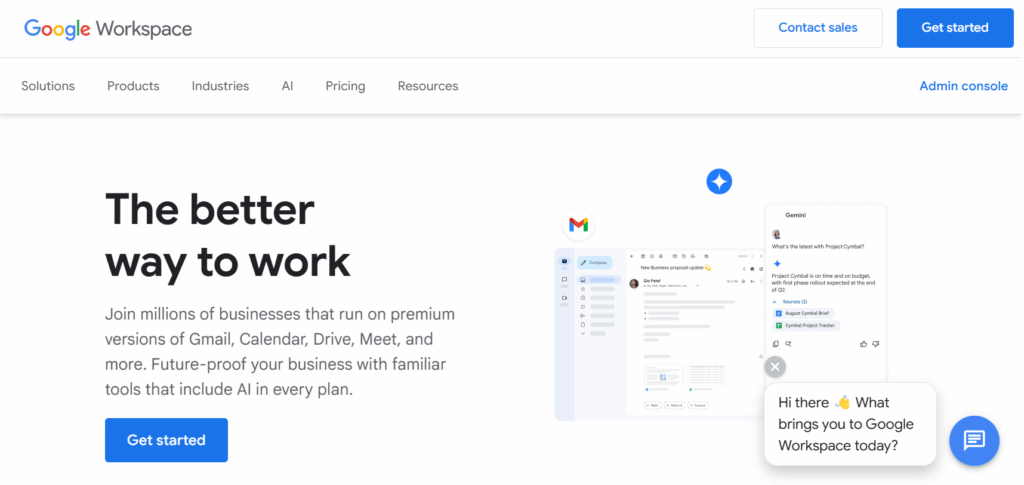
Overview: Google Workspace (formerly G Suite) is a collection of cloud-based productivity tools including Gmail, Docs, Sheets, and Drive. It offers seamless collaboration features and is widely adopted across various industries.
Key Features:
- Real-time document editing
- Cloud storage and file sharing
- Integration with other Google services
- Email and calendar management
Pricing: Google Workspace starts at $6 per user per month.
Ideal For: Teams seeking an all-in-one solution for communication, document management, and collaboration.
7. Monday.com
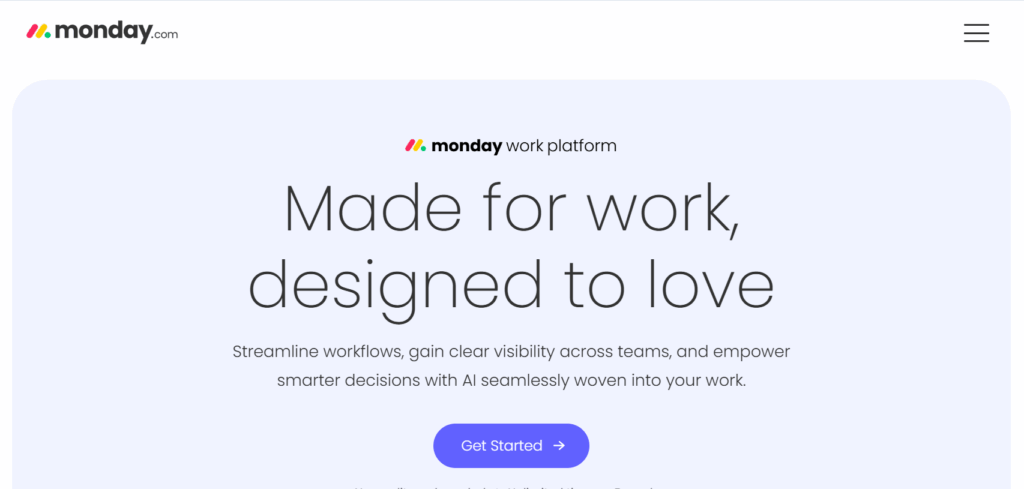
Overview: Monday.com is a versatile work operating system that helps teams manage projects, workflows, and processes. Its customizable interface allows teams to adapt the tool to their specific needs.
Key Features:
- Customizable dashboards
- Automation capabilities
- Team collaboration features
- Integration with other tools
Pricing: Monday.com offers a free trial, with plans starting at $8 per user per month.
Ideal For: Teams looking for a flexible and customizable collaboration solution.
8. Notion
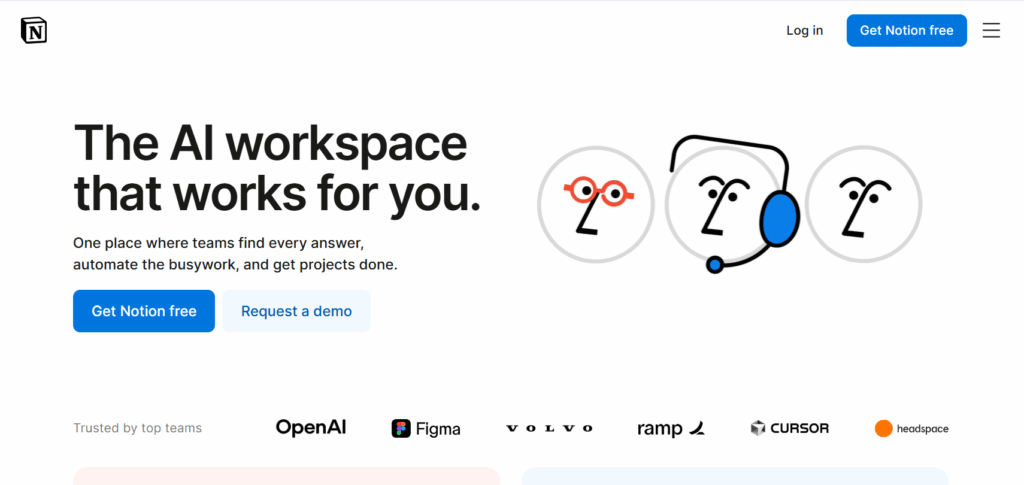
Overview: Notion is an all-in-one workspace that combines note-taking, task management, and project planning. It allows teams to create wikis, databases, and documentation in one place.
Key Features:
- Wiki and documentation creation
- Task and project management
- Customizable templates
- Integration with other tools
Pricing: Notion offers a free version, with premium plans starting at $8 per user per month.
Ideal For: Teams needing a centralized workspace for knowledge management and collaboration.
9. Basecamp
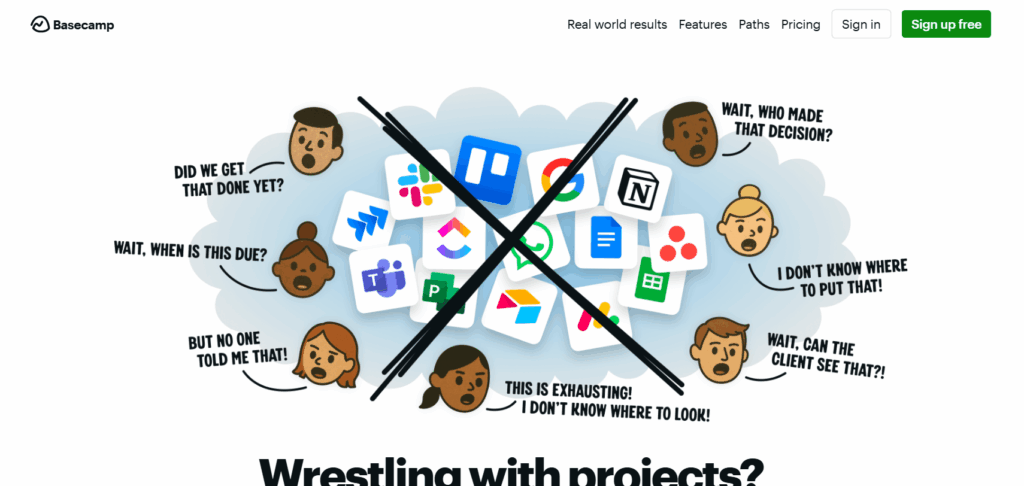
Overview: Basecamp is a comprehensive project management tool that brings all team communication and work into one place. It’s designed to simplify complex projects and keep everyone organized.
Key Features:
- Centralized project management
- To-do lists and scheduling
- Document sharing and storage
- Team messaging and calls
Pricing: Basecamp offers a free trial, with plans starting at $99 per month for up to 3 projects. Additional projects are $39 each per month.
Ideal For: Teams looking for an all-in-one project management solution that keeps everything in one place.
10. ClickUp
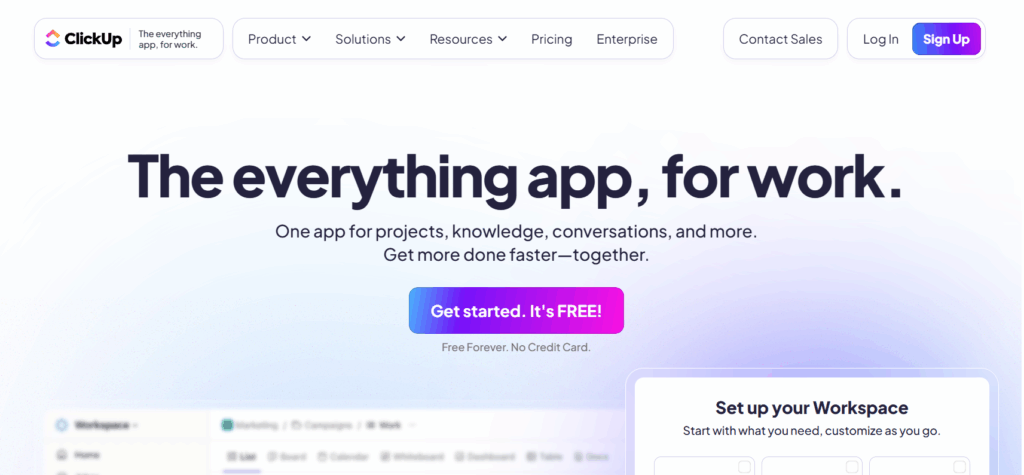
Overview: ClickUp is a highly customizable project management platform that offers a wide range of features to help teams manage tasks, projects, and goals. It’s designed to be a comprehensive solution for teams of all sizes.
Key Features:
- Task and project management
- Customizable views and layouts
- Goal setting and tracking
- Integration with other tools
Pricing: ClickUp offers a free version with basic features, while premium plans start at $9 per user per month.
Ideal For: Teams seeking a highly customizable project management tool with extensive features.
11. Figma
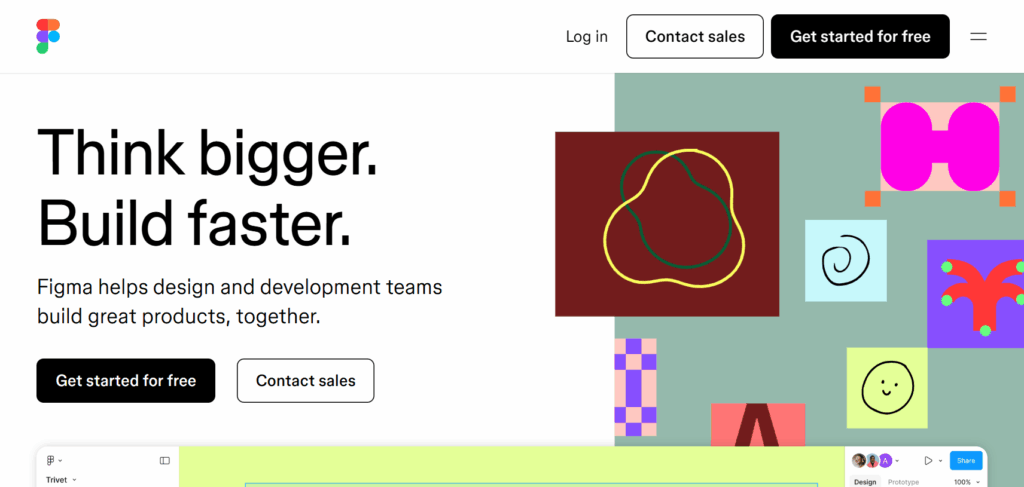
Overview: Figma is a collaborative interface design tool that allows teams to design, prototype, and gather feedback in one place. It’s widely used by UX/UI designers and product teams.
Key Features:
- Real-time collaboration on designs
- Prototyping and animation capabilities
- Design system management
- Integration with other design tools
Pricing: Figma offers a free version with basic features, while premium plans start at $12 per user per month.
Ideal For: Design teams and product managers looking for a collaborative design tool.
12. Miro
Overview: Miro is a visual collaboration platform that enables teams to work together through online whiteboards, diagrams, and visual planning tools. It’s perfect for brainstorming sessions and visual project planning.
Key Features:
- Interactive whiteboards
- Diagramming and flowchart tools
- Team collaboration features
- Integration with other tools
Pricing: Miro offers a free version with basic features, while premium plans start at $10 per user per month.
Ideal For: Teams that benefit from visual collaboration and brainstorming tools.
13. Dropbox
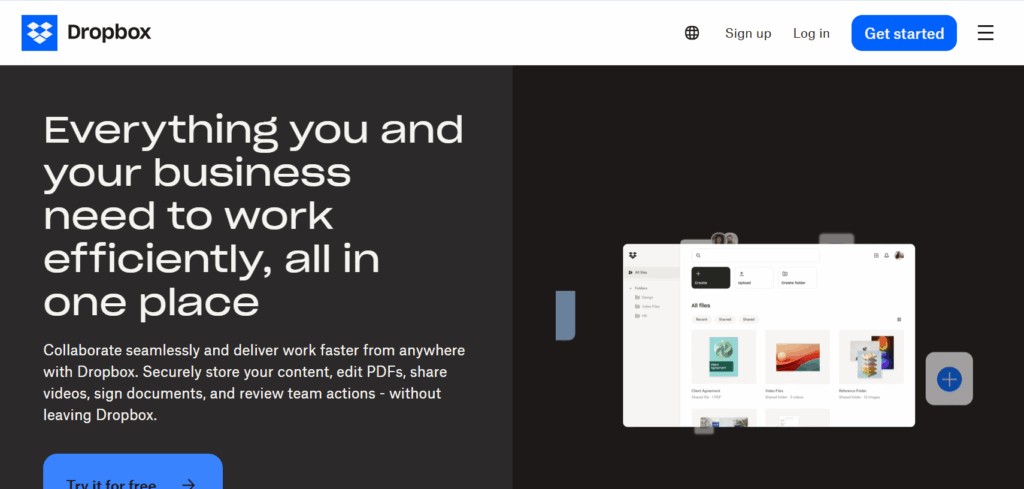
Overview: Dropbox is a cloud-based file storage and sharing service that makes it easy for teams to access and share documents, images, and other files. It offers synchronization across multiple devices.
Key Features:
- Secure file storage and sharing
- File synchronization across devices
- Collaboration tools for document editing
- Integration with other productivity tools
Pricing: Dropbox offers a free version with limited storage, while premium plans start at $9.99 per user per month.
Ideal For: Teams needing reliable file storage and sharing capabilities.
14. Evernote
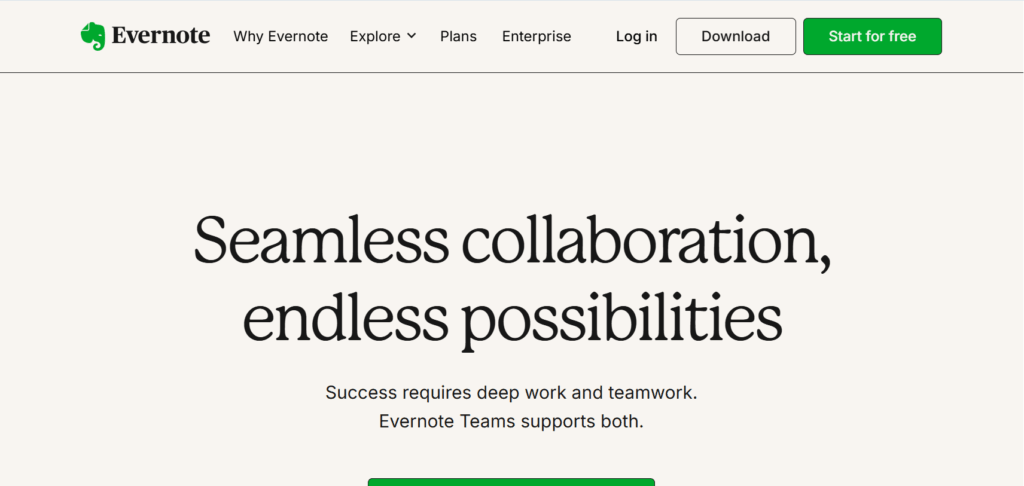
Overview: Evernote is a note-taking and organization tool that helps teams capture ideas, organize information, and collaborate on projects. It’s perfect for keeping track of meeting notes, tasks, and research.
Key Features:
- Note-taking and organization
- Collaboration on shared notebooks
- Web clipping and file attachment
- Integration with other tools
Pricing: Evernote offers a free version with basic features, while premium plans start at $7.99 per user per month.
Ideal For: Teams looking for a robust note-taking and organization tool.
15. Confluence
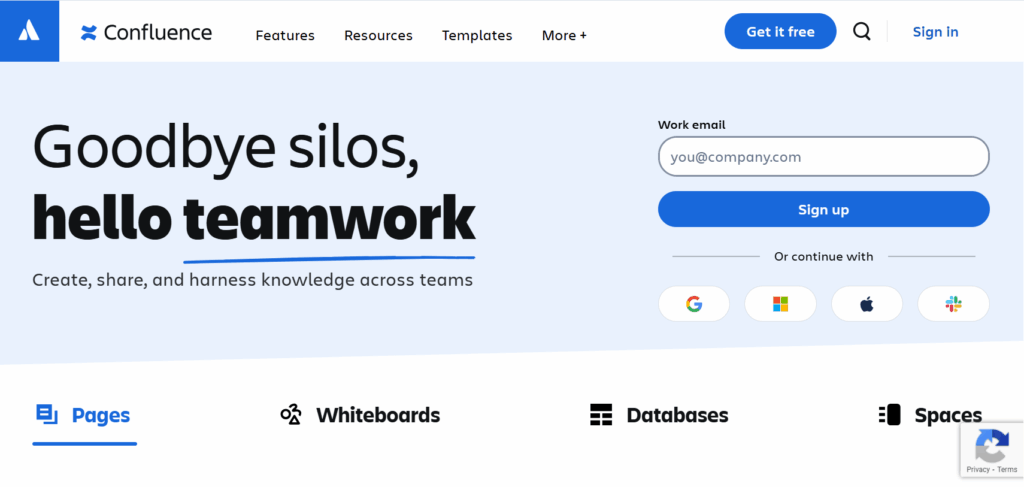
Overview: Confluence is a collaborative content management system designed for team documentation, project tracking, and knowledge sharing. It’s widely used by software development teams and project managers.
Key Features:
- Team documentation and knowledge bases
- Project tracking and planning
- Integration with Jira and other tools
- Customizable templates and workflows
Pricing: Confluence offers a free trial, with plans starting at $7.50 per user per month.
Ideal For: Teams needing a comprehensive documentation and knowledge-sharing platform.
Comparison Table: Top Collaboration Tools
Table
Copy
| Tool | Best For | Pricing (Starting At) | Key Features |
|---|---|---|---|
| Microsoft Teams | Microsoft product users | $5/user/month | Integrated Office 365 apps, file sharing, project management |
| Slack | User-friendly communication | $6.67/user/month | Organized channels, integrations, customizable notifications |
| Asana | Project management | $10.99/user/month | Task tracking, Gantt charts, team calendars |
| Trello | Visual project management | $9.99/user/month | Visual boards, customizable workflows, power-ups |
| Zoom | Video conferencing | $14.99/month | HD video calls, screen sharing, virtual backgrounds |
| Google Workspace | All-in-one solution | $6/user/month | Real-time document editing, cloud storage, email and calendar management |
| Monday.com | Customizable collaboration | $8/user/month | Customizable dashboards, automation, team collaboration |
| Notion | Centralized workspace | $8/user/month | Wiki creation, task management, customizable templates |
| Basecamp | All-in-one project management | $99/month | Centralized project management, to-do lists, document sharing |
| ClickUp | Customizable project management | $9/user/month | Task management, customizable views, goal tracking |
| Figma | Design collaboration | $12/user/month | Real-time design collaboration, prototyping, design system management |
| Miro | Visual collaboration | $10/user/month | Interactive whiteboards, diagramming tools, team collaboration |
| Dropbox | File storage and sharing | $9.99/user/month | Secure file storage, synchronization, collaboration tools |
| Evernote | Note-taking and organization | $7.99/user/month | Note-taking, shared notebooks, web clipping |
| Confluence | Documentation and knowledge sharing | $7.50/user/month | Team documentation, project tracking, integration with Jira |
How to Choose the Right Collaboration Tool for Your Team
Selecting the best collaboration tool depends on your team’s specific needs and workflow. Consider the following factors when making your decision:
- Team size: Some tools are better suited for small teams, while others can handle larger organizations.
- Industry: Certain industries may require specific features or compliance standards.
- Existing tools: Look for tools that integrate with software your team already uses.
- Budget: Consider both free and premium options that fit within your budget.
- User experience: Ensure the tool is easy to use and adopt by your team members.
Getting Started with Your New Collaboration Tool
Once you’ve selected a collaboration tool, follow these steps to ensure a smooth implementation:
- Train your team: Provide training sessions to familiarize everyone with the tool.
- Set up workflows: Customize the tool to match your team’s existing processes.
- Establish guidelines: Create clear guidelines for communication and collaboration within the tool.
- Monitor and adjust: Regularly assess how the tool is working for your team and make adjustments as needed.
The Future of Collaboration Tools
As technology continues to advance, collaboration tools will likely incorporate more AI-powered features and improved integration capabilities. The focus will be on creating seamless, intuitive experiences that further enhance team productivity and efficiency.
Final Thoughts
Investing in the right collaboration tools can significantly impact your team’s productivity and success. By evaluating your team’s needs and exploring the options available in 2025, you can find a solution that best supports your workflow and goals. Remember to consider key features, pricing, and ease of use when making your decision.





